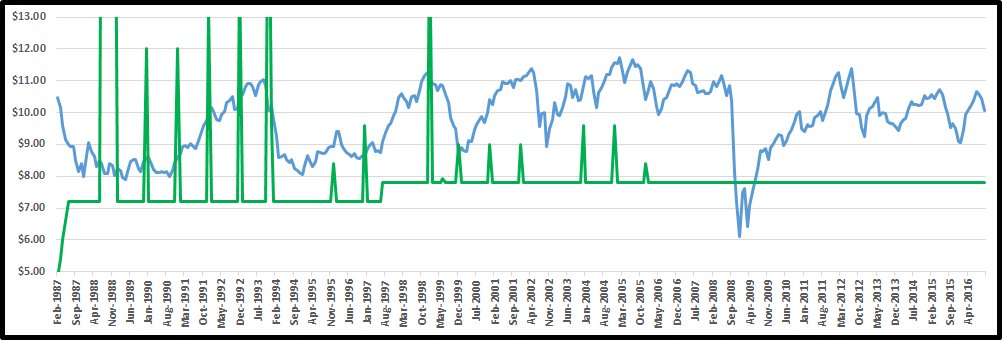ESRwannabe
Full time employment: Posting here.
- Joined
- Mar 19, 2010
- Messages
- 889
Disclaimer: I'm still working (I'm 40).
I have moved most of my taxable investments into CEFs. All of the CEFs I own are either a mixture of equity and fixed income, or strictly fixed income. In total equity is only 33%. On the fixed income side I have just about everything (munis, junk, agency, foreign, emerging market, corporate, preferred, convertibles, treasuries, bank loans, etc.). On the equity side, most of it is focused on the utility sector.
Right now I am working on maxing out an investment grade muni CEF. A full position for me is $50k total invested into it. That will take me another two or three months to finish up (around $41k into it right now). After that I'll have to look into around and see what's on sale.
401k is in Vanguard Total Bond Index
Roth IRA is in Vanguard junk bond fund.
Pension = 16 years vested and counting.
I have moved most of my taxable investments into CEFs. All of the CEFs I own are either a mixture of equity and fixed income, or strictly fixed income. In total equity is only 33%. On the fixed income side I have just about everything (munis, junk, agency, foreign, emerging market, corporate, preferred, convertibles, treasuries, bank loans, etc.). On the equity side, most of it is focused on the utility sector.
Right now I am working on maxing out an investment grade muni CEF. A full position for me is $50k total invested into it. That will take me another two or three months to finish up (around $41k into it right now). After that I'll have to look into around and see what's on sale.
401k is in Vanguard Total Bond Index
Roth IRA is in Vanguard junk bond fund.
Pension = 16 years vested and counting.
Last edited:


